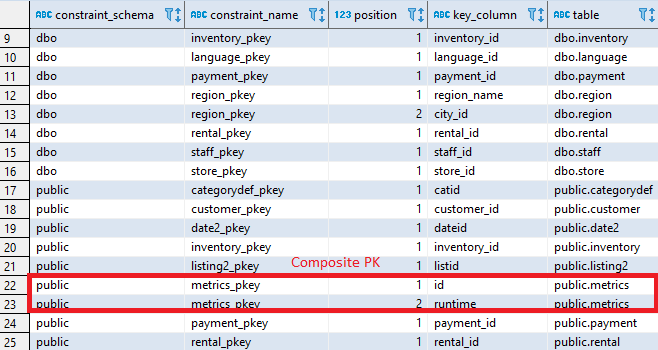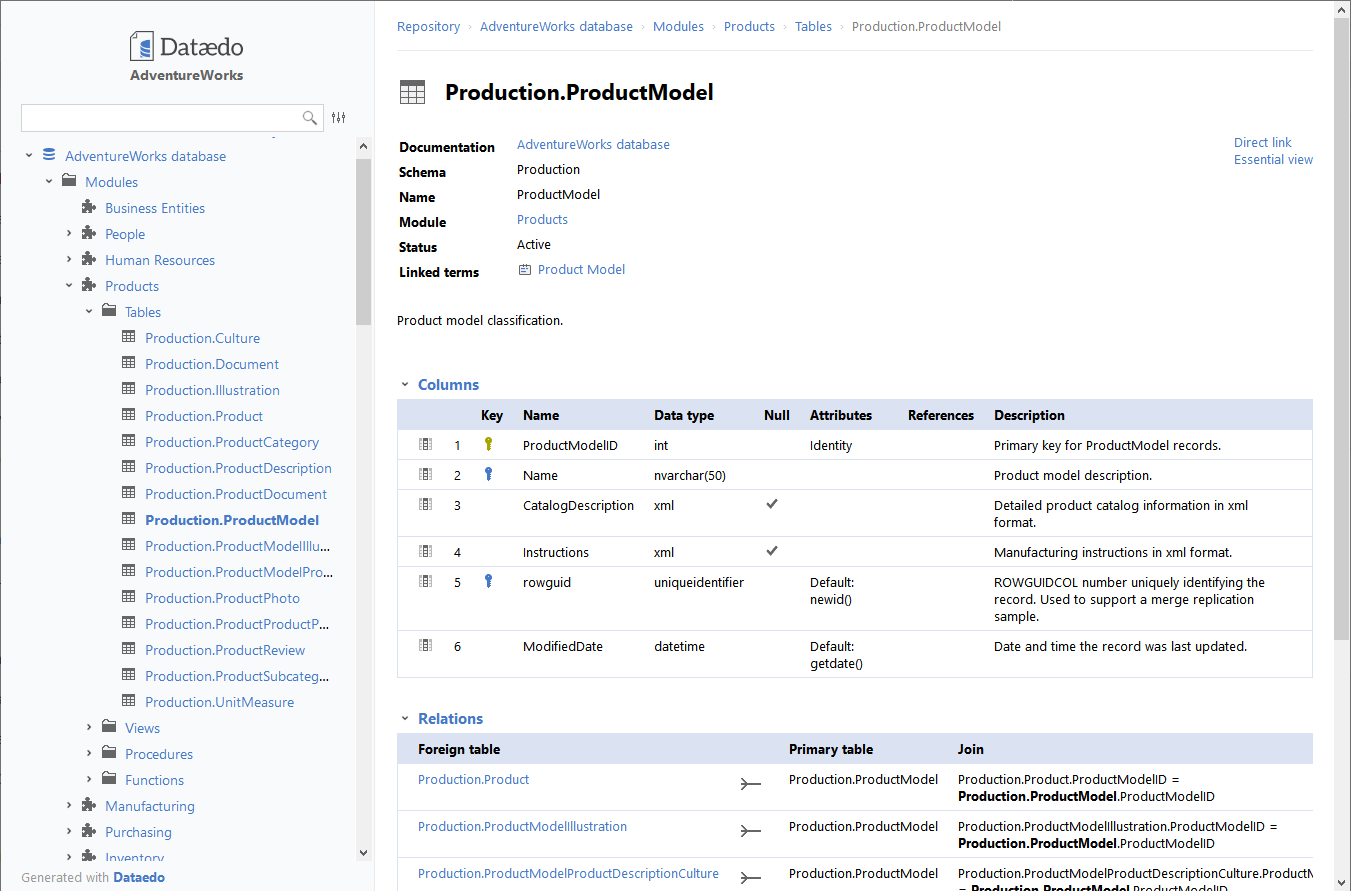Query below lists all primary keys constraints (PK) in the database with their columns (one row per column).
Query
select tco.constraint_schema,
tco.constraint_name,
kcu.ordinal_position as position,
kcu.column_name as key_column,
kcu.table_schema || '.' || kcu.table_name as table
from information_schema.table_constraints tco
join information_schema.key_column_usage kcu
on kcu.constraint_name = tco.constraint_name
and kcu.constraint_schema = tco.constraint_schema
and kcu.constraint_name = tco.constraint_name
where tco.constraint_type = 'PRIMARY KEY'
order by tco.constraint_schema,
tco.constraint_name,
kcu.ordinal_position;
Columns
- constraint_schema- PK constraint schema name
- constraint_name - PK constraint name
- position - index of column in table (1, 2, ...). 2 or higher means key is composite (contains more than one column)
- key_column - PK column name
- table - table schema name and tabl name on which PK is defined
Rows
- One row represents one primary key column
- Scope of rows: columns of all PK constraints in a database
- Ordered by schema, PK constraint name, column position
Sample results

You could also get this
Get this interactive HTML data dictionary in minutes with Dataedo.












 Bart Gawrych
Bart Gawrych